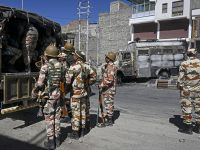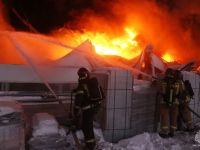With proven oil reserves expected to last only about 10 more years and a population growing at 4 percent per year, Syria may become a net importer of oil within the next decade. Thus, the exploration for oil and natural gas is a top priority in Syria.
Note: The information contained in this report is the best available as of March 2000 and can change. See albawaba’s oil and energy news concerning Syria.
OIL
Syria's oil industry faces many challenges in the years to come. Oil output and production continues to decline due to technological problems, depletion of oil reserves and low oil prices.
Starting in the mid-1980s and into the 1990s, oil production increased dramatically, peaking at 604,000 barrels per day (bbl/d) in 1996. Since then, Syria's oil output has fallen steadily, to an estimated average for 1999 of 546,000 bbl/d, as older fields, especially the 140,000-bbl/d Jebisseh field discovered in 1968, have reached maturity. Production is expected to continue its decline over the next several years, while consumption rises, leading to a reduction in Syrian net oil exports.
Oil is critical to Syria's economy, accounting for 55 percent -60 percent of Syria's total export earnings and more than one-third of its GDP. Syria currently exports Syrian Light, a blend of light and sweet crudes produced primarily from the Deir ez-Zour and Ash Sham fields, and heavy Suwaidiyah crude produced from the Soudie and Jebisseh fields. The country also exports fuel oil and other products. Syria is a member of OAPEC (the Organization of Arab Petroleum Exporting Countries), although not of OPEC.
Syria's main oil producer (by far) is al-Furat Petroleum Co. (AFPC) a joint venture established in May 1985 between state-owned Syrian Petroleum Company, or SPC (50 percent share), Pecten Syria Petroleum (15.625 percent), plus foreign partners Royal Dutch/Shell (15.625 percent) and Germany's Deminex (18.75 percent). AFPC's fields are located in the northeastern Syria -- particularly the Deir ez-Zour region, where commercial quantities of oil were discovered in the late 1980s -- and are producing about 400,000 bbl/d of high quality light crude.
AFPC's main oil field is al-Thayyem, although production there has been declining since 1991. Another important field -- Omar/Omar North -- began production in February 1989 at 55,000 bbl/d. Shortly thereafter, operator Shell was pressed by the cash-strapped Syrian government to step up production (against Shell's advice) to 100,000 bbl/d.
The result was serious reservoir damage, and in April 1989, output plummeted to 30,000 bbl/d. Currently, Omar produces about 15,000 bbl/d from natural pressure and 30,000 bbl/d from water injection. Other al-Furat fields include al-Izba (light oil), Maleh (34o API gravity oil), Sijan, and Tanak.
In 1996, AFPC began a 5-year production cutback schedule of 10,000 bbl/d annually, but production has fallen even faster. Production from fields run by SPC peaked in the late 1970s at more than 165,000 bbl/d.
SPC's fields include: 1) Karatchuk -- Syria's first discovery, located near the border with Iraq and Turkey; 2) Suwaidiyah -- a giant heavy oil field located south of Karatchuk in the Hassakeh region (and extending into northwestern Iraq) which currently produces around 150,000 bbl/d, and for which Elf Aquitaine has bid for a contract ot enhance oil recovery; 3) Jibsah -- a major field producing both oil and gas; 4) Rumailan -- a small field near Suwaidiyah which produces heavy oil; and 5) Alian, Tishreen, and Gbebeh -- three small, depleting fields producing heavy oil.
Other major Syrian oil fields include Maleh, Qahar, Sijan, Azraq, and Tanak. Jafra, discovered in late 1991, was first expected to have potential for more than 60,000 bbl/d in production. Currently, Jafra is producing only 20,000 bbl/d, however. Besides conventional oil reserves, Syria also has major shale oil deposits in several locations, mainly the Yarmouk Valley stretching into Jordan.
With oil supplies expected to deplete in the next 5-10 years, Syria is concentrating on development and exploration initiatives. Oil exploration activity in Syria has been slow in recent years due to unattractive contract terms by SPC, and poor exploration results.
For these reasons, only four companies (Elf, Shell, Deminex, and Marathon) out of 14 operating in the country in 1991 remain in Syria at present. However, under pressure from Shell and Elf Aquitaine, Syria has begun to take a more flexible approach to foreign oil contracts, demonstrated by the publication of a favorable consortium agreement which is likely to attract other foreign companies.
Since June 1996, when Mohammed Maher Jamal, a geologist, replaced Nader al-Nabulsi as Oil and Mineral Wealth Minister (as part of an anti-corruption drive), oil exploration in Syria has picked up somewhat, although drilling activities are limited to a small number of companies.
In November 1997, a new 12,000-bbl/d oil well ("al-Kashmeh") began production near the Syrian-Iraqi border. The well represented a joint venture between SPC and the Irish company, Tullow. However, in October 1998, Tullow Oil withdrew its concessions and closed operations in Syria, citing reduced revenues due to low oil prices.
Despite a recent increase in exploration activity, only about 36 percent of Syria's estimated 800 potential oil and gas structures have been drilled. No major new oil reserves have been discovered since around 1992. Without significant new discoveries in the next few years, Syrian and foreign oil company officials (including Shell, the main foreign operator) believe that the country could become a net oil importer in the next 10 years or so.
The last time Syria was a net oil importer was in 1987; Syria bought from Iraq until April 1982, when it switched to Iran as an ally and oil supplier and closed the 1.1-1.4 million-bbl/d-capacity IPC pipeline from Kirkuk to Banias.
Refining/Downstream
Syria's two refineries are located at Banias and Homs. Total current production from these refineries is 242,140 bbl/d (135,000 bbl/d and 107,140 bbl/d, respectively). Syria is planning to construct a third refinery, with an initial capacity of 60,000 bbl/d (possibly increasing to 120,000 bbl/d), at Deir ez-Zour to supply products to the eastern part of the country.
A feasibility study on this project reportedly was completed in January 1998. In addition, Syria plans to upgrade its two current refineries, both of which are in urgent need of overhauling, to replace output of fuel oil with light products. As of late 1999, however, these plans were on hold, at least for the short term.
Syria also has agreed (in August 1997) to increase cooperation with Lebanon in the oil products area, with Syrian specialists slated to conduct a study of Tripoli's refinery.
Syria markets all of its crude oil, including that produced by foreign companies, solely through state marketing company Sytrol. Prices for Syrian Light and Suwaidiyah blends are tied to the price of dated Brent and are adjusted monthly.
At present, Sytrol has term contracts with more than 20 companies, including Agip, Bay Oil, Chevron, Conoco, Marc Rich, OeMV, Total, Veba. In November 1999, Royal Dutch/Shell signed a contract to purchase at least 16,000 bbl/d from Syria starting in 2000.
Shell had cancelled a previous purchase agreement in 1997, when it was buying 35,000 bbl/d of heavy and light crude oil. Since January 1994, Sytrol has had a clause in its term contracts prohibiting customers from re-selling Syrian crudes without written permission from Sytrol. This is intended to curb spot trading in Syrian crudes and especially sales to Israel.
Syria's major oil export terminals are at Banias and Tartous on the Mediterranean, with a small tanker terminal at Latakia. Banias can accommodate tankers up to 210,000 dead weight tons (dwt), and has a storage capacity of 437,000 tons of oil in 19 tanks. Tartous can take tankers up to 100,000 dwt, and is connected via a pipeline to the Banias terminal. Latakia can handle oil tankers up to 50,000 dwt. All three terminals are operated by the Syrian Company for Oil Transport (SCOT), a sister of SPC.
SCOT also is in charge of Syria's pipelines, including: 1) a 250,000-bbl/d export line from SPC's northeastern fields to the Tartous terminal, with a connection to the Homs refinery; 2) a 500,000-tons/year refined products pipeline system linking Homs refinery to Damascus, Aleppo, and Latakia; 3) a 100,000-bbl/d spur line from al-Thayyem and other fields to the T-2 pumping station on the old Iraqi Petroleum Company (IPC) pipeline; 4) a spur line from the al-Ashara and al-Ward fields to the T-2 pumping station.
On July 14, 1998, Syria and Iraq signed a momoradum of understanding on reopening the IPC pipeline, which links the Kirkuk oil fields in northern Iraq with Syria's port of Banias on the Mediterrean.
The 884km/552-mile, 1.1-1.4 million-bbl/d pipeline was closed in 1982 after a break in diplomatic ties, then severely damaged during the 1991 Gulf War. Besides IPC, the Syrian-Iraqi memorandum provided for construction of a new pipeline through Syrian territory to transport Syrian Light crude from the Deir ez-Zour field to the Banias terminal, and for a joint 140,000-bbl/d refinery at Banias to handle the blend of Iraqi and Syrian crude being pumped through the pipeline.
In early March 2000, both the Iraqi and Syrian sections of the IPC pipeline reportedly were ready for operation, and Syria was using parts of it to transport its own crude oil (Iraqi oil exports through the pipeline would require U.N. Security Council approval) to Mediterranean terminals. In the meantime, press reports have indicated that Iraqi oil is being smuggled into Syria by truck.
Source:United States Energy Information Administration.
© 2000 Mena Report (www.menareport.com)







